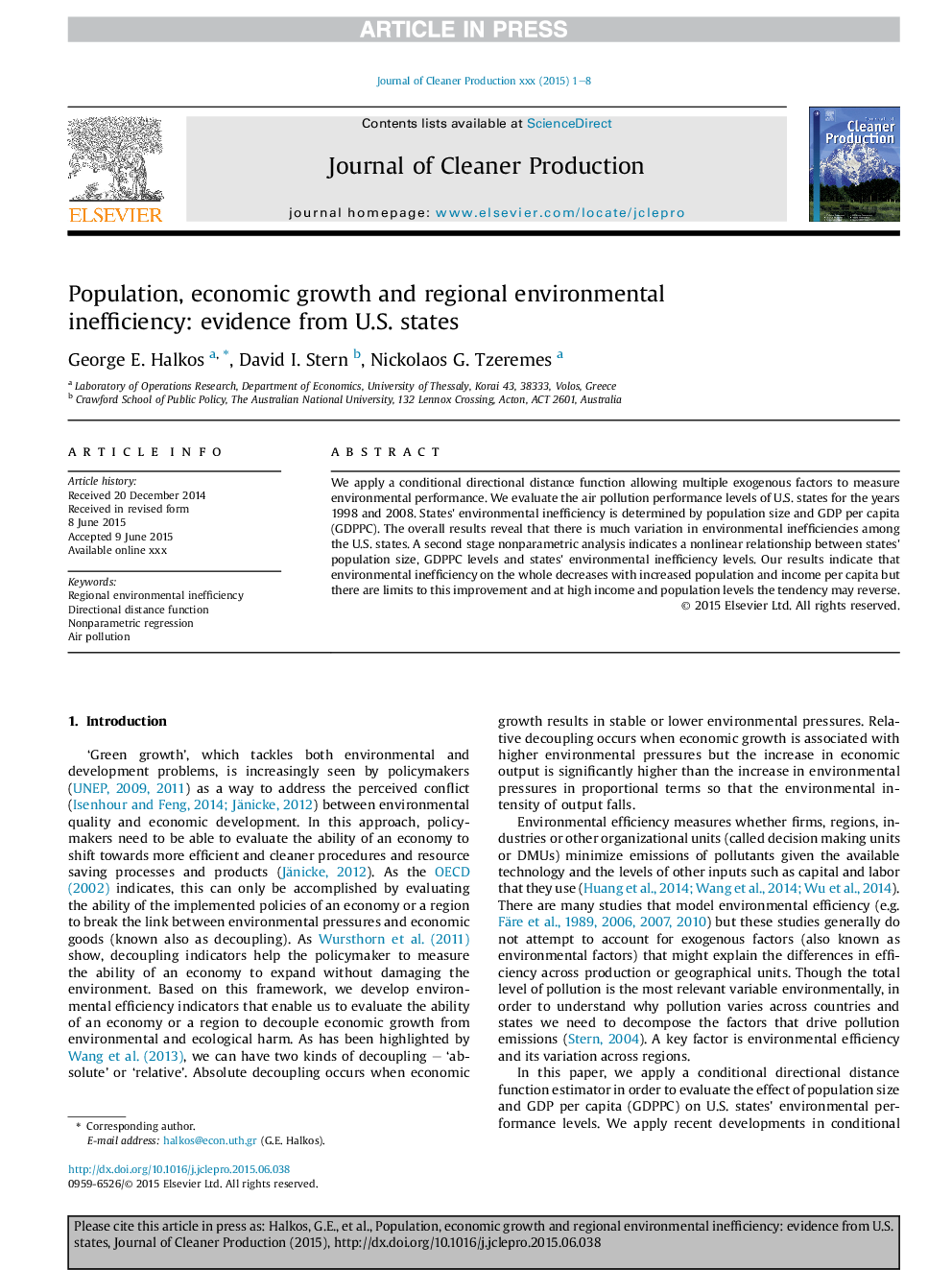| Article ID | Journal | Published Year | Pages | File Type |
|---|---|---|---|---|
| 10687971 | Journal of Cleaner Production | 2016 | 8 Pages |
Abstract
We apply a conditional directional distance function allowing multiple exogenous factors to measure environmental performance. We evaluate the air pollution performance levels of U.S. states for the years 1998 and 2008. States' environmental inefficiency is determined by population size and GDP per capita (GDPPC). The overall results reveal that there is much variation in environmental inefficiencies among the U.S. states. A second stage nonparametric analysis indicates a nonlinear relationship between states' population size, GDPPC levels and states' environmental inefficiency levels. Our results indicate that environmental inefficiency on the whole decreases with increased population and income per capita but there are limits to this improvement and at high income and population levels the tendency may reverse.
Related Topics
Physical Sciences and Engineering
Energy
Renewable Energy, Sustainability and the Environment
Authors
George E. Halkos, David I. Stern, Nickolaos G. Tzeremes,
